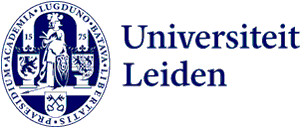
Future Foresight: how to anticipate future challenges
At the end of January, students of the Master Honours Class ‘Future Foresight’ had their final session. Students gained new perspectives, resilience and creative problem-solving skills to navigate societal shifts. Throughout the course, they learned how to think about the future and the challenges it poses for stakeholders. 'You really have to function as a team.'
Future foresight and Design Thinking: a winning combination
First and foremost, Future Foresight is about taking an abstract phenomenon like ‘the future’ and thinking about its problems and potential benefits in a concrete manner. ‘Students learn how to do this through Leiden Learning & Innovation Centre's (LLInC) Future Foresights methodology, enhanced by design thinking principles. Melissa Amorós Lark, one of the lecturers, says this approach is most useful when you encounter a problem but don’t know how to start working on a solution. ‘Design thinking offers clear steps and tips on how to deal with this.’

Students get an opportunity to apply Future Foresight methods through working with stakeholders that are facing an ever-changing world. The students split up in small groups, each group engaging with a different stakeholder. At the end of the course, the teams had the opportunity to give stakeholders a Future Foresight workshop. This gives the students a better understanding of the future and all that it entails. And the stakeholders? They are introduced to new frameworks for thinking about their future challenges, and can start thinking about how to solve them.
100 ways
One such example is the ‘100 ways’ exercise, used by one of the students' groups during their workshop on a circular economy with the Leiden municipality. The approach involves producing as many ways as possible in which a future change might impact people. This way, one can always be one step ahead of potential problems.

The students created 'personas', fictional characters based on their research, to represent how different citizens of Leiden might react to a transition to a circular economy. A 'green citizen' who cares deeply about the environment might be a major supporter, but a car dealer who wants to continue with business as usual might not be. Understanding and empathizing with those who are affected and grasping how they will respond is an essential part of decision-making. This is also a message the students try to communicate to their stakeholders.
Working with stakeholders
The ‘Future Foresight’ method allows students to think structurally about the challenges that stakeholders are confronted with. Students say that this is the most challenging, and therefore the most interesting aspect of this course. ‘Working with stakeholders is so different from everything else you get to do as a student. It offers you fascinating practical insights’, says Ivo, who worked with the municipality.
Erwin agrees: ‘It is a unique experience, and a stark contrast with my regular study, where it’s often all about theory. What makes it even more valuable is that you really have to cooperate with your classmates and function as a team, which is rare.’

Lily highlights the challenge of communicating with stakeholders. ‘As a student, you have to approach professionals and try to really show them the benefits of design-thinking. This is not always easy, but in doing so, you also engage more deeply with the theory and your own motivations. So, by the time you do your workshop, you have learned so much about both the material and yourself.’ When reflecting on the course at the end of this final session, the students all share their enthusiasm about the experience. The course has been a success for them, which is celebrated with some delicious chocolate cookies.
Text: Stan De Feyter
Photoraphy: Eric van den Bandt
